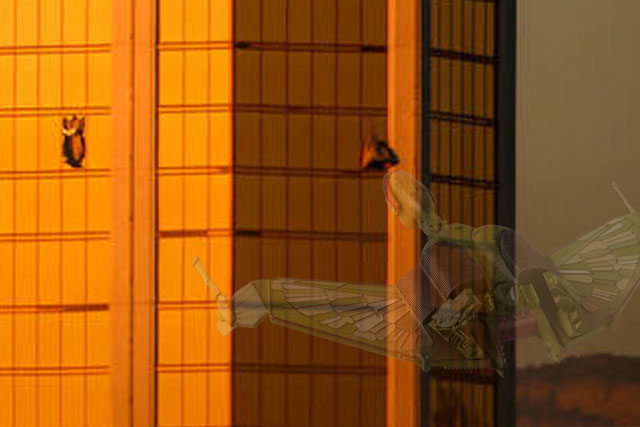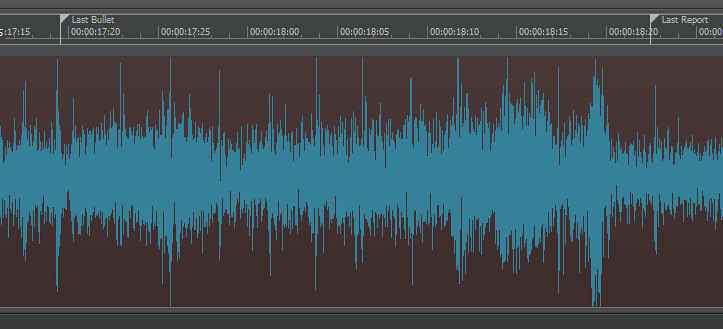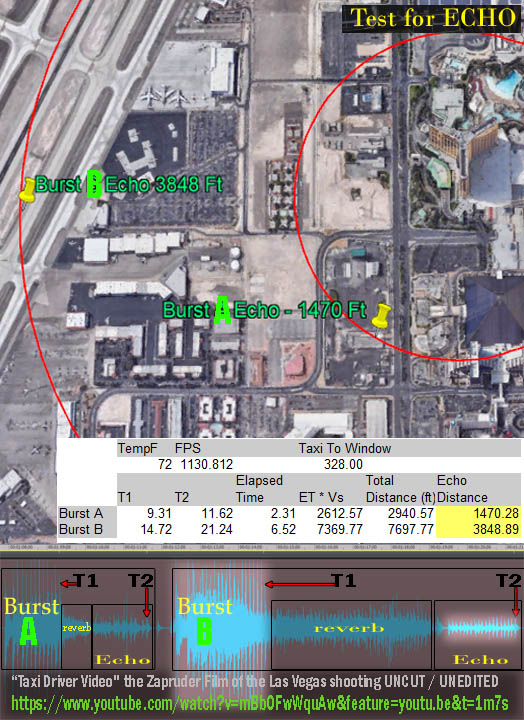United States News
See other United States News Articles
Title: Video claims shooter dressed as police
Source:
[None]
URL Source: https://duckduckgo.com/?q=LAS+VEGAS ... a=videos&iax=1&iai=qMxn7hpXmk4
Published: Oct 8, 2017
Author: Planet X Investigations
Post Date: 2017-10-08 15:41:01 by A K A Stone
Keywords: None
Views: 67150
Comments: 186
Video claims shooter dressed as police Poster Comment: Video claims shooter dressed as police
Post Comment Private Reply Ignore Thread
Top • Page Up • Full Thread • Page Down • Bottom/Latest
Begin Trace Mode for Comment # 81.
#1. To: A K A Stone (#0)
(Edited)
SMH. LOL.
Why the silly meaningless image?
"Planet X / Nibburu" https://www.google.com/search? source=hp&q=Planet+X+%2F+Nibburu Not a credible source.
Perhaps you are correct. I've never heard of them. There is a video they have and it has some interesting shots. Care to comment or you just going to call me conspiracy theorist? No matter either way. I think one person did so far.
Nah. It's easy for someone to think they hear something (and be misled) when they don't understand the acoustics. Especially when the Niburu cultists / grifters start injecting their click- bait input.
"There is a principle which is a bar against all information, which is proof against all arguments and which can not fail to keep a man in everlasting ignorance-that principle is contempt prior to investigation." --HERBERT SPENCER
Like I said, I've seen the video these Niburuspiracists recycled - when it was first published. I understood the audio then, and it hasn't changed. The guy wants you to believe the "shooter" made sounds that A: were not local gunfire. Eventually somebody will compile a timeline with links to every burst of gunfire. I believe the evidence will all point back to those two windows. Haven't seen any evidence to the contrary yet.
Ok tell me about your audio. Where were was the taxi driver specifically at the first five burst fired. Show me where you checked the information. How did you find out where the taxi driver was? Then also since you are so smart. Do your echo test from where this video was shot. You are to lazy to dispute anything in this video. Even if you are right. So you are probably to busy or lazy to do what I asked. I seriously doubt you did your own research.
https://www.youtube.com/embed/kcjYefWRsKU? version=1&showinfo=0 Doubful that it's "original" - but anyhow observe the sustained burst in question, between: https://youtu.be/kcjYefWRsKU?t=8 and There isn't any discernible echo. Probably because this is the aiming point and not the origination point. Here's what I see between the last bullet sound and the last report: Where T1 is the last bullet sound and T2 is the last report sound. 1.07 seconds between T1 and T2 = 1208 ft. 1208 ft from the Mandalay Bay, per Google earth, puts us right about where the video is being taken. It's difficult to count the number of bullet events because they are in close synchronization with the report events - but I count somewhere between 80 - 95; making this probably one of the longer events I counted in the cab- driver videos - 94 rounds, which I suspect is from a 100 round drum magazine. Do we see a belt fed weapon or a drum in the "PLANET X INVESTIGATIONS" video? Nope. More evidence the Niburutards are FOS, as usual. ============== Distribution: A K A Stone,Tooconservative,nolu chan, buckeroo,KlingonAmbassador
There isn't any discernible echo. Probably because this is the aiming point and not the origination point. Here's what I see between the last bullet sound and the last report: Where T1 is the last bullet sound and T2 is the last report sound. 1.07 seconds between T1 and T2 = 1208 ft. 1208 ft from the Mandalay Bay, per Google earth, puts us right about where the video is being taken. What do you mean by the last bullet? It that the time of the sound as recorded on that video, or what is it? Is T1 a gunshot and T2 an echo. What do you mean by report, if not an echo? And just how did you calculate such a remarkable result for distance? Don't tell me. 1,125 feet per second (the speed of sound) x 1.07 = 1,203.75 and you rounded it off to 1,208 feet. Forget the rounding. Why does that measure the distance from the video taker to the shooter? https://en.wikipedia.org/wiki/Speed_of_sound
>>What do you mean by report, if not an echo? As any Boy Scout with one of these... ...should know: https://duckduckgo.com/? q=An+explosive+noise%3A+the+report+of+a+rifle >>And just how did you calculate such a remarkable result for distance? { blah blah blah wikispew} I used the same speed I used in my other analysis (appended below) - based upon an air temperature of 72 degrees Then I calculated the difference in time between the last bullet sound (T1) and the corresponding last report sound (T2). T2-T1 = time the report traveled = 1.07 1.07 * FPS of 1130.8 = 1208.8 ========================== Conclusion: Burst B is NOT two weapons being fired simultaneously. It is one weapon being fired at a more distant target. The longer distance, observable in the period between Burst B's T1 and T2, manifests a corresponding longer period of reverb. It is the reverb that is being incorrectly interpreted as a second weapon (and second shooter) firing at the same time. Research resources:
Then I calculated the difference in time between the last bullet sound (T1) and the corresponding last report sound (T2). Your arithmetic is fine, your logic is a FAIL. You failed to answer the question: "Why does that measure the distance from the video taker to the shooter?" You have still not identified what sounds you refer to. What is the first sound of a bullet? The initial sound wave as heard at the recording location? What is the last sound of the bullet? An echo? Another bullet? In this case, the video taker was 400 yards away from the shooter. The sound wave originated at position a and traveled 400 yards to get to the videotaker at position b. That took ~1.07 seconds for the sound to travel. If you measure the first sound of the bullet as when it traveled faster than sound, and then struck something or whizzed past making a sound, your ~1.07 second measurement is impossible as the elapsed time difference would be the time it took the sound wave to travel (~1.07s) minus the time it took the bullet to travel. Your calculation as the bullet traveling at aproximately the speed of light. The bullet and the sound both travel the same path at the same time, at different velocities. As the sound takes ~1.07 seconds, the difference in their arrival times cannot be ~1.07s. Two cars travel an 80 mile strip. One travels 80 mph and crosses the finish line in 1 hour. The other travels 40 miles an hour and crosses the finish line in 2 hours. If the slow car went half the speed of the faster car, and the time difference was 1 hour, the distance can be calculated as the velocity of the faster vehicle (80 mph) divided by the velocity of the slower vehicle (40 mph) time the time difference (1 hour). Your calculation is good arithmetic but gibberish logic. ~1.07 seconds is simply the time for sound to travel from Mandalay Bay to the target recording location. An echo of a sound originating at position a results from the sound wave traveling the distance originating point a to recording position b, proceeding an unidentified distance to the reflective surface c, and returning to position b. The sound must arrive/leave recording position b at ~1.07 seconds, travel to a reflective surface, and return. The elapsed time must exceed 1.07s. In measuring the distance of a lightning bolt, you can use the sighting of the lightning bolt, the light traveling at the speed of light, as the originating time of the initiating event. You can count until the slower moving sound wave arrives, and calculate distance to the lightning. This is because the velocity of light is so great, its travel time over relatively short distances is negligible. Unfortunately, even with a Boy Scout merit badge, an audio recording from 400 yards away does not identify distance of the originating event. Bullets do not travel at the speed of light, or anywhere near it. The way you know the distance from the Mandalay Bay to the event location is by measuring it.
You're wrong. He is adjusting for the speed of sound on the night in LV. The speed of sound is 1100 feet/minute as a decent estimate anywhere (1,087 ft/s more accurately) but he is correcting for altitude and weather conditions. This has nothing to do with speed of light since the muzzle flashes weren't visible from the concert area in any video I've seen. If the GPS position is being continuously recorded or if the people recording at the concert (hundreds or thousands) were recording video, you can readily determine their position and distance from the shooter pretty easily, just based on the time at which the sound of gunshots arrive, knowing the distance of their source. They can only be described as a portion of an arc, bounded by the concert area rectangle, that constitutes a circle around the shooter's location in the hotel. That's a pretty sound way to determine a fixed location. This is true of all these A/V recordings of the event. You can determine very accurately their location from the video and the audio timing, even more so if a bullet flies past their camera. VxH does have a sound method for analysis but only if he can gather enough A/V recordings from the concert and anywhere else, like the taxi driver. I am curious that we have seen no reporting that police requested the concert goers to upload their videos from that night. Maybe the sheriff and the FBI have really dropped the ball on this. Usually, the FBI is pretty sharp on audio lab stuff.
He is absolutely wrong and just bullshitting again. Your observations are irrelevant to his claim being accurate. His claim is 100% impossible. At #42, Vxh compares two times from the Taxi Driver video: ["Taxi Driver Video" the Zapruder Film of the Las Vegas shooting UNCUT / UNEDITED] https://www.youtube.com/watch ?v=mBbOFwWquAw&feature=youtu.be&t=1m7s and https://www.youtube.com/watc h?v=mBbOFwWquAw&feature=youtu.be&t=1m24s At #43, citing #42, he claims a total distance of 1208.80 feet. He is measuring distance of sound, not light/bullet speed or travel distance to a target. If, as claimed, the total distance for the sound is 1,208.80 feet, that includes the echo time according to his own graphic in the same post. His graphic indicates that the total distance is twice the echo distance, or the echo distance (presumably unobstructed) is half the total distance. He adjusted the distance by 100%. This purports to be from the taxi video. The sound of the gunshot was recorded almost immediately. The recorded returning sound is from an unknown reflecting distance. If the reflecting surface was plucked from his butt to be the bandstand, the sound would have traveled 1208 feet to the bandstand, and 1208 feet back to the taxi, if the path back at ground level were unobstructed. You cannot adjust to a 1,208 foot total distance, unless the sound turned around and came back unobstructed at 604 feet. Unless the sound somehow returned at the speed of light, instead of the speed of sound, the total distance must be double the 1,280 feet that he claimed. He is again incapable of describing the data on his own graphic. Of course, the sound could have bounced off something 640 feet away and come back to the taxi. The Reflecting surface is unknown. What sound cannot do is zing into something 1,280 feet away, and come back from that point, and travel a total distance of 1,280 feet.
#82. To: nolu chan (#81)
(Edited)
You're putting your words in his mouth. Nice straw man you've got there.
SMH. Attention to detail isn't your forte. Neither 1280 nor 1208 are on the graphic What does this mean?
Top • Page Up • Full Thread • Page Down • Bottom/Latest
#2. To: VxH (#1)
#10. To: A K A Stone (#2)
(Edited)
Why the silly meaningless image?
#11. To: VxH (#10)
Not a credible source
#17. To: A K A Stone (#11)
(Edited)
call me conspiracy theorist?
#19. To: VxH, tooconservative (#17)
Nah. It's easy for someone to think they hear something (and be misled) when they don't understand the acoustics.
#21. To: A K A Stone (#19)
(Edited)
B: are associated with the pattern of reports that is coming from the hotel.
#22. To: VxH (#21)
#32. To: A K A Stone (#22)
Another copy of the same video - claiming to be
[Original footage of las vegas shooting 50 filled 200 injured]
https://youtu.be/kcjYefWRsKU?t=22T1 T2 Elapsed Time Total Distance 17.69 18.76 1.07 1208.80ft
#40. To: VxH, A K A Stone, Tooconservative (#32)
T1 T2 Elapsed Time Total Distance 17.69 18.76 1.07 1208.80ft In dry air at 0 °C (32 °F), the speed of sound is 331.2 metres per second (1,087 ft/s; 1,192 km/h; 741 mph; 644 kn). At 20 °C (68 °F), the speed of sound is 343 metres per second (1,125 ft/s; 1,235 km/h; 767 mph; 667 kn), or a kilometre in 2.91 s or a mile in 4.69 s.
#42. To: nolu chan, A K A Stone, Tooconservative, Klingon Ambassador (#40)
(Edited)



An analysis of two sequential burts of gunfire between:
["Taxi Driver Video" the Zapruder Film of the Las Vegas shooting UNCUT / UNEDITED]
https://www.youtube.com/watch ?v=mBbOFwWquAw&feature=youtu.be&t=1m7s
and
https://www.youtube.com/watc h?v=mBbOFwWquAw&feature=youtu.be&t=1m24s
===============
T1: Time from start of video (1minute N seconds) at the time of the last shot in the burst.
T2: Time from the start of the video (1minute N seconds) at the time of the echoed sound event corresponding to T1.
TempF: the air temperature (72 degrees F)
FPS: 1130 ft per second -- The speed of sound at 72 degrees F
Elapsed Time: T2 minus T1, the number of seconds between the last shot, and the echo of the last shot in each burst.
Total Distance: Elapsed Time * FPS = the total distance traveled between T1 and T2.
Echo Distance = The distance the echo traveled from the aiming point back to the point of origin.
===============
https://www.google.co m/search?biw=1544&bih=856&q=Forensic+Acoustics+gunfire
http://www.physic sclassroom.com/mmedia/waves/er.cfm
https://www.timeanddate.com/weather/usa/las- vegas/historic
http://www.csgnetwork.c om/soundspeedcalc.html
#43. To: All (#42)
(Edited)
T1 T2 Elapsed Time Total Distance 17.689655 18.758621 1.068966 1208.80
Here's a snapshot with increased decimal precision and less rounded confusion :-}
#71. To: VxH (#43)
I used the same speed I used in my other analysis (appended below) - based upon an air temperature of 72 degrees
#75. To: nolu chan, VxH (#71)
Unfortunately, even with a Boy Scout merit badge, an audio recording from 400 yards away does not identify distance of the originating event. Bullets do not travel at the speed of light, or anywhere near it.
#81. To: Tooconservative, VxH (#75)
You're wrong. He is adjusting for the speed of sound on the night in LV. The speed of sound is 1100 feet/minute as a decent estimate anywhere (1,087 ft/s more accurately) but he is correcting for altitude and weather conditions. This has nothing to do with speed of light since the muzzle flashes weren't visible from the concert area in any video I've seen.
An analysis of two sequential burts of gunfire between:

Replies to Comment # 81.
#83. To: nolu chan (#81)
(Edited)
What sound cannot do is zing into something 1,280 feet away,

End Trace Mode for Comment # 81.
[Home] [Headlines] [Latest Articles] [Latest Comments] [Post] [Mail] [Sign-in] [Setup] [Help] [Register]
